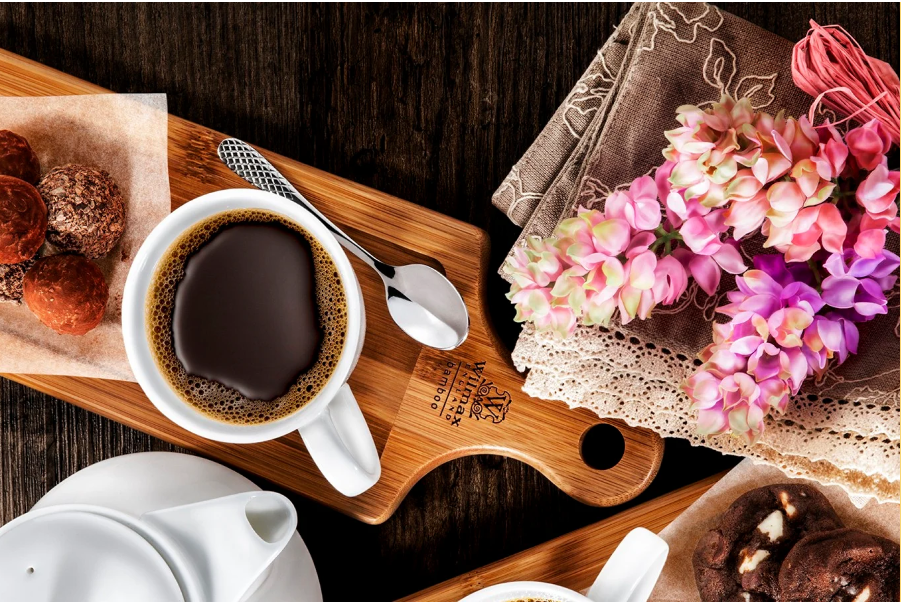Sweet Heat: Why Chili Is Invading the Dessert Menu

Mango-habanero sorbets and jalapeño truffles are bringing a fiery twist to indulgence.
In the world of desserts, sweetness has long reigned supreme. But as modern palates evolve, pastry chefs around the world are turning up the temperature — literally. The rise of spicy desserts has become one of the most exciting shifts in contemporary dining, blending heat and sugar in ways that surprise and delight. From mango-habanero sorbets to jalapeño dark chocolate truffles, the once-untouchable line between sweet and savory is officially gone.
The trend began quietly, with chefs experimenting behind the scenes. A pinch of cayenne in hot chocolate here, a drizzle of chili honey on ice cream there. But today, “sweet heat” has moved from niche novelty to culinary phenomenon. What was once a daring twist has become a full-fledged flavor movement dominating dessert menus in restaurants from New York to Tokyo.
The Science Behind Sweet Heat
The combination of sugar and spice isn’t just a trend — it’s chemistry. Capsaicin, the active compound in chili peppers, binds to pain receptors in the tongue, creating a mild burning sensation. This activates the body’s natural endorphins — the same feel-good chemicals released during exercise or laughter. When paired with the pleasure response triggered by sweetness, the result is an addictive sensory experience that keeps people coming back for more.
“It’s the roller coaster effect,” explains pastry chef Lucía Méndez of Barcelona’s Dulce Calor. “The chili creates a spark of surprise, then the sugar softens it, creating this perfect cycle of pain and pleasure. It’s emotional eating at its finest.”
From Tradition to Trend
Sweet and spicy combinations aren’t new — they’re ancient. Cultures across the globe have been blending heat and sugar for centuries. In Mexico, tamarind candies laced with chili powder are a childhood staple. In India, desserts often balance sweetness with warming spices like cardamom, ginger, and even red chili. Southeast Asia, too, has long embraced chili-mango and coconut-chili pairings.
What’s new is how these traditional flavor principles are being reimagined in the global fine dining scene. Restaurants are now serving smoked chili crème brûlée, ghost pepper caramel tarts, and chili-lime macarons. At the same time, ice cream artisans are introducing bold flavors like habanero chocolate ripple and spicy guava sorbet. What was once exotic has now become desirable, even fashionable.
The Rise of Spicy Luxury
The allure of spicy desserts extends beyond taste — it’s also about experience and identity. Diners today crave stories behind their food, and chili offers just that. Each pepper — from smoky chipotle to numbing Sichuan peppercorn — carries its own regional legacy and character. When infused into desserts, it adds not only flavor but also cultural depth.
“Spice tells a story,” says New York-based chocolatier Amira Patel. “When I create a chili-infused ganache, I’m connecting the world’s oldest spice traditions with modern indulgence. It’s not just dessert — it’s a dialogue between cultures.”
Social media has also played its part. Videos of spicy chocolate challenges, fiery donut tastings, and heat-infused latte art have gone viral, helping push these bold flavors into the mainstream. And as visual as they are flavorful, these creations are tailor-made for Instagram — glistening, colorful, and a little dangerous.
Chili Meets Chocolate — A Match Made in Heaven
One of the most celebrated unions in the sweet-heat movement is chili and chocolate. The combination dates back to the ancient Mayans, who mixed cacao with chili and honey in sacred drinks. Modern chefs are reviving that ritual with inventive twists — think ancho chili brownies, chili-infused hot cocoa, or smoked chipotle truffles. The earthy bitterness of chocolate meets the fiery kick of chili, resulting in a multidimensional flavor that’s both primal and elegant.
Even high-end patisseries are embracing the heat. In Paris, Maison de Fuego serves a dark chocolate soufflé with chili crème anglaise, while in Los Angeles, Fire & Frost Gelato has become famous for its spicy mango-lime sorbet. What was once an oddity is now an indulgent standard.
The Future of Dessert Innovation
The “sweet heat” movement is only the beginning. Chefs are expanding the definition of dessert to include elements once reserved for the savory world. Expect to see black pepper panna cotta, cinnamon-chili pavlovas, and even jalapeño lemon tarts gracing menus in 2025 and beyond.
This evolution also fits into the growing demand for experiential dining. People don’t just want dessert — they want drama. The interplay of heat and sweetness delivers exactly that: surprise, contrast, and intensity. It’s a small but thrilling rebellion against predictability.
As boundaries between culinary traditions blur, one thing is certain: dessert is no longer defined by sugar alone. It’s a playground of sensation — and chili is leading the revolution.
🔥 From smoky chipotle ganache to ghost pepper caramel — the future of dessert is as bold as it is beautiful.
Share:





